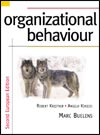 |
1 |  | 
Absenteeism and turnover are examples of internal forces for change. |
|  | A) | True |
|  | B) | False |
 |
 |
2 |  | 
Amoung the three types of change, adaptive change is lowest in complexity, cost, and uncertainty. |
|  | A) | True |
|  | B) | False |
 |
 |
3 |  | 
Benchmarking is a process by which a company compares its performance with that of high-performing organizations. |
|  | A) | True |
|  | B) | False |
 |
 |
4 |  | 
According to the systems model of change, any change, no matter how large or small, creates additional change throughout the organization. |
|  | A) | True |
|  | B) | False |
 |
 |
5 |  | 
Fragmentation encourages sharing, cooperation, and collaboration. |
|  | A) | True |
|  | B) | False |
 |
 |
6 |  | 
Which of the following is an external force for change? |
|  | A) | Job dissatisfaction |
|  | B) | Absenteeism |
|  | C) | Social pressures |
|  | D) | Manager behaviour |
|  | E) | Ummet needs |
 |
 |
7 |  | 
Introducing a practice new to the organization is an example of _________ change. |
|  | A) | adaptive |
|  | B) | strategic |
|  | C) | radically innovative |
|  | D) | innovative |
|  | E) | functional |
 |
 |
8 |  | 
Which of the following is an assumption of Lewin's change model? |
|  | A) | Effective change requires the proper reinforcement. |
|  | B) | The change process involves adapting something previously learned. |
|  | C) | People can be made to change even when they are not motivated to do so. |
|  | D) | If the goals of change are highly desirable, resitance will be virtually nonexistent. |
|  | E) | Organizing arrangements are the hub of all organizational changes. |
 |
 |
9 |  | 
According to the systems model of change, organization culture and group processes are examples of _________ target element of change. |
|  | A) | people |
|  | B) | organizing arrangements |
|  | C) | social factors |
|  | D) | methods |
|  | E) | goals |
 |
 |
10 |  | 
According to John Kotter, the first step managers must take in order for organizational change efforts to succeed is |
|  | A) | generate short-term wins. |
|  | B) | create a guiding coalition. |
|  | C) | develop a vision and strategy. |
|  | D) | establish a sense of urgency. |
|  | E) | communicate the change vision. |
 |
 |
11 |  | 
_________ is an emotional/behavioural response to real or imagined threats to an established work routine. |
|  | A) | Intergroup conflict |
|  | B) | Resistance to change |
|  | C) | Role overload |
|  | D) | Stress |
|  | E) | Job dissatisfaction |
 |
 |
12 |  | 
Employees deal with _________ by generating grapevine rumours. |
|  | A) | peer pressure |
|  | B) | fear of failure |
|  | C) | surprise and fear of the unknown |
|  | D) | personality conflicts |
|  | E) | a loss of job security |
 |
 |
13 |  | 
_________ learning occurs through systematic gathering of internal and external information. This information tends to be quantitative and analysed via formal systems. |
|  | A) | Synthetic |
|  | B) | Analytic |
|  | C) | Interactive |
|  | D) | Institutional |
|  | E) | Experimental |
 |
 |
14 |  | 
Competition tends to generate |
|  | A) | an overemphasis on being good rather than looking good. |
|  | B) | learning through free admission of failure. |
|  | C) | a hesitancy to accept difficult tasks or assignments. |
|  | D) | a fixation on long-term goals and solutions. |
|  | E) | a reactive attitude toward change. |
 |
 |
15 |  | 
Experimenting with new ideas, processes, and structural arrangements are leadership activities which |
|  | A) | work to focus ideas with impact. |
|  | B) | work to generate ideas with impact. |
|  | C) | build a commitment to empowerment. |
|  | D) | build a commitment to learning. |
|  | E) | work to generalise ideas with impact. |
 |




 2002 A McGraw-Hill Online Learning Centre
2002 A McGraw-Hill Online Learning Centre